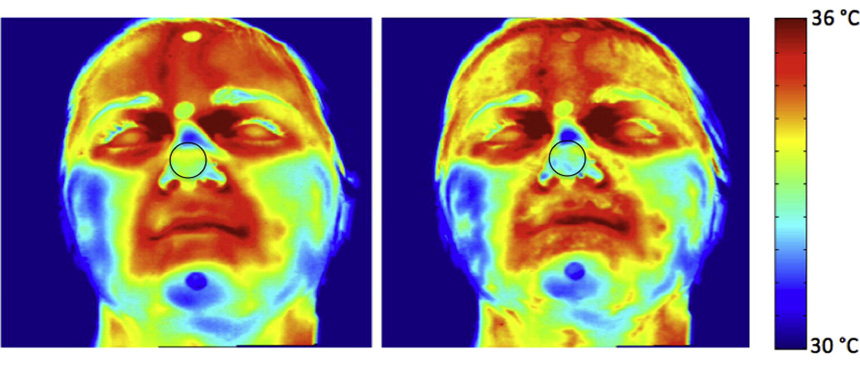Most cameras capture what we can see. But infrared cameras can detect and capture invisible infrared rays that we can experience as heat but we can’t see.
Heat is emitted by all objects above absolute zero and the amount of radiation emitted by an object increases with temperature. Thermal imaging allows one to see variations in temperature across a particular object or body. When viewed through a thermal imaging camera, warmer objects are generally distinguishable from cooler backgrounds.
Infrared thermography operates in three wavelength bands: Medium Wavelength Infrared (MWIR), Long Wavelength Infrared (LWIR) and Very Long Wavelength Infrared (VLIR). LWIR cameras are the most commonly used IR cameras, as this spectrum is generally emitted by humans and other warm-blooded animals. LWIR imaging has many practical applications. The advantage is that LWIR is generally a passive tool because it is a measure of a signal emitted by an object, thus not requiring an additional light source.
However, LWIR imaging has one big disadvantage – It lacks contrast with respect to background objects and noise. Therefore, images of people tend to look washed out and ghostlike, and it is difficult to obtain information from the images, which would allow reliable and repeatable identification of a person’s characterizing facial or other features.

Now US Army has invented and patented LWIR imaging techniques to enhance identifiability of an captured objects.
The invented system models a three-dimensional topological surface of an object to provide high quality images. First, a first image of the object is acquired, using a thermal imaging camera. The first image includes multiple of pixels each representative of at least one component of thermal data. Next, the system calculates a normal vector for each pixel in the first image, corresponding to the normal vector on a surface of the object. Thereafter, a three-dimensional model representing a surface of the object is generated based on aggregating the normal vector for each pixel together in the first image.
Certain portions of the subject’s face are much easier to distinguish/recognize in the improved image when compared to the conventional images, i.e., eye-brows, eye-lashes, teeth, wrinkles in the forehead, etc. Finally, image can be mapped onto the three-dimensional surface representation to provide a better view of the object being captured by camera.
Publication number: US 20160232709
Patent Title: Method for Modeling a Three-Dimensional Topological Surface of an Object from Long-Wave-Infrared Radiation Emitted from the Object
Publication date: 11 Aug 2016
Filing date: 9 Feb 2015
Inventors: Gorden W. Videen; Kristan P. Gurton; Alexey J. Yuffa;
Original Assignee: U.S. Army Research Laboratory

